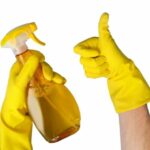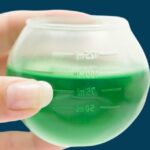Canadian Regulations for Laundry Products
By: Ivy Tang, PRINCIPAL REGULATORY CONSULTANT, email
Laundry detergents in Canada are subject to a comprehensive set of regulations designed to ensure product safety, environmental protection, and consumer well-being. These regulations encompass everything from chemical composition to labelling requirements, impacting how laundry products are manufactured, packaged, and sold. Below, we explore the key regulations that govern laundry detergents in Canada.
Consumer Chemicals and Containers Regulations (CCCR) and Laundry Detergents
In Canada, the classification, packaging, and labelling of laundry detergents are regulated by the Consumer Chemicals and Containers Regulations (CCCR) under the Canada Consumer Product Safety Act. This regulation mandates that retail laundry detergents feature hazard symbols and bilingual warnings to alert users to potential risks, such as toxicity or flammability. Additionally, packaging must be durable and, depending on the hazard classification, child-resistant to prevent accidental exposure. The CCCR also restricts the use of certain toxic and corrosive substances and limits chemical concentrations, safeguarding both human health and the environment. These measures ensure that laundry products are safe for everyday use.
Canada VOC (Volatile Organic Compounds) Regulations and Laundry Detergents
To address environmental concerns, the Volatile Organic Compound Concentration Limits for Certain Products Regulations impose strict limits on the maximum concentration of VOCs allowed in laundry products such as detergents, pre-wash products, starches, spot removers, and other finishing products. The goal is to reduce air pollution by minimizing VOC emissions, which contribute to smog and ground-level ozone. Compliance with these limits is mandatory, and products that do not meet these standards cannot be legally sold in Canada. Manufacturers often need to reformulate their products to reduce VOC content without sacrificing effectiveness.
Canadian Environmental Protection Act (CEPA) and Laundry Detergents
The Canadian Environmental Protection Act (CEPA) plays a critical role in regulating the chemical substances used in laundry detergents. Under CEPA, manufacturers must ensure that all chemicals in their products are listed on either the Domestic Substances List (DSL) or the Non-Domestic Substances List (NDSL). Chemicals on the NDSL are subject to importation limits and require tracking and notification, adding an additional layer of regulatory oversight. This regulation ensures that the chemicals used in laundry detergents are assessed for their potential impact on human health and the environment.
Hazardous Products Regulations (HPR) and Laundry Detergents
The Hazardous Products Regulations (HPR) govern the use of laundry detergents in industrial and workplace environments, such as in the textile, hospitality, and automotive sectors. These regulations mandate proper labelling and packaging to ensure worker safety. Industrial-use laundry detergents with hazardous components must display clear hazard pictograms and warnings in accordance with the Workplace Hazardous Materials Information System (WHMIS). Employers are also required to provide Safety Data Sheets (SDS) that detail the chemical composition, hazards, and handling procedures. Compliance with the HPR is monitored by Health Canada, ensuring that these products are used safely in industrial settings.
2-Butoxyethanol Regulations and Laundry Detergents
2-butoxyethanol (2-BE), also known as ethylene glycol monobutyl ether, is commonly used in cleaning products, including laundry stain removers, due to its effectiveness in removing grease and oils. However, under the Canadian Environmental Protection Act (CEPA), 2-BE is considered harmful to human health. As a result, there are strict regulations that limit its concentration in household cleaning products. Laundry stain removers manufactured, imported, or sold in Canada can contain a maximum of 22% (w/w) of 2-BE. The concentration of 2-BE in a product must be determined by an accredited laboratory, ensuring that it meets the safety standards set forth by Canadian regulations.
Conclusion
Canadian regulations for laundry detergents are designed to protect consumers, workers, and the environment. By adhering to these regulations, manufacturers can ensure that their products are safe, effective, and compliant with the law. Understanding these regulatory requirements is essential for companies looking to enter or remain competitive in the Canadian market.
FAQ about Laundry Detergent Regulations in Canada
What are the labelling requirements for laundry detergents in Canada? Laundry detergents in Canada must comply with the Consumer Chemicals and Containers Regulations (CCCR). Labels must include hazard symbols, bilingual warnings, and safety instructions. Packaging must be child-resistant and durable if the product is classified as hazardous.
Are there limits on the chemicals used in laundry detergents in Canada? Yes, the Canadian Environmental Protection Act (CEPA) and the Consumer Chemicals and Containers Regulations (CCCR) restrict the use of certain toxic and corrosive substances. The Volatile Organic Compound (VOC) Regulations also impose limits on the concentration of VOCs in laundry products.
How does Canada regulate the environmental impact of laundry detergents? Canada regulates the environmental impact of laundry detergents through the VOC Regulations, which limit the concentration of VOCs to reduce air pollution, and through CEPA, which assesses the risk of chemical substances on human health and the environment.
What are the packaging requirements for laundry detergents in Canada? Packaging for laundry detergents must be durable and, if the product is classified as hazardous, child-resistant. Labels must include clear hazard symbols and bilingual warnings to comply with CCCR.
Do industrial laundry detergents in Canada have different regulations? Yes, industrial laundry detergents in Canada are regulated under the Hazardous Products Regulations (HPR). These products must display hazard pictograms and warnings in accordance with WHMIS, and employers must provide Safety Data Sheets (SDS) detailing the chemical composition, hazards, and handling procedures.
How Dell Tech Supports Canadian Regulations
Regulatory Support
Ensure your laundry detergents comply with Canadian standards with Dell Tech’s specialized expertise. We provide consulting services focused on the Canadian market, covering essential regulations such as the Consumer Chemicals and Containers Regulations (CCCR), Volatile Organic Compounds (VOC) limits, and the Canadian Environmental Protection Act (CEPA).
Our services include handling documentation, conducting testing, and performing compliance audits for certifications like UL ECOLOGO and Green Seal. Partner with us to simplify your compliance process and stay informed about regulatory updates. Visit our regulatory services pages or contact us to learn more.
In-house Laundry Detergent Testing
Enhance your laundry products with Dell Tech’s testing services, designed to meet Canadian regulatory standards.
Our testing covers key areas such as ASTM D4265 for stain removal, colour fastness, and foaming efficiency. Additionally, the HCPA’s DCC-11 method evaluates pre-wash spotters to ensure effective stain removal. We also conduct Dermal Irritection and Corrositex tests to confirm skin safety and prevent corrosive effects.
Achieve excellence and environmental responsibility with Green Seal certifications tailored for household (GS-48) and industrial (GS-51) laundry products. Partner with Dell Tech to ensure your products meet Canadian regulatory standards and excel in the marketplace. Learn more about testing services here.
Dell Tech has provided professional, confidential consulting services to the
specialty chemical industry in Canada, the USA, Europe, and Asia for the last 40 years.
Talk to our team about how we can benefit your business today!






